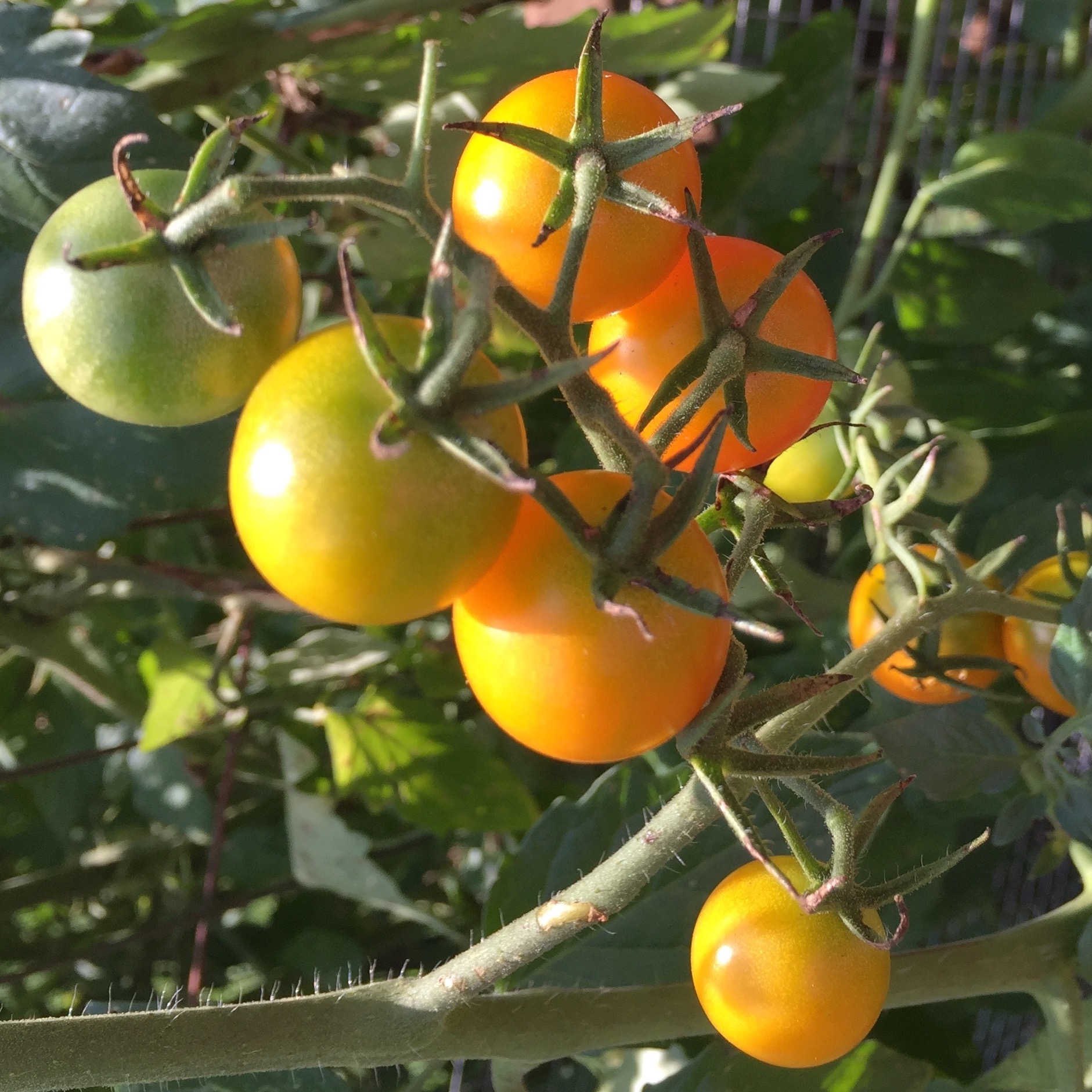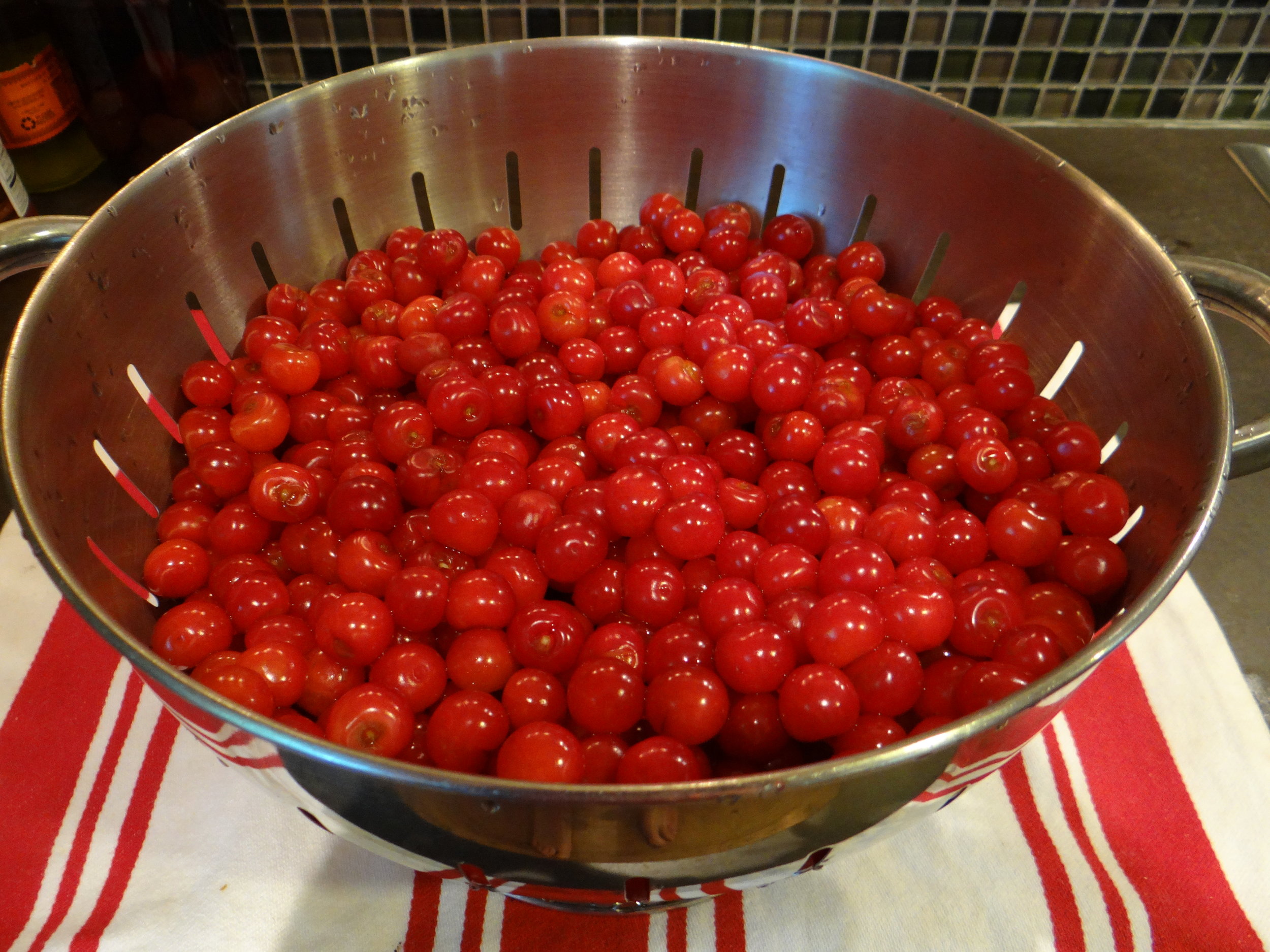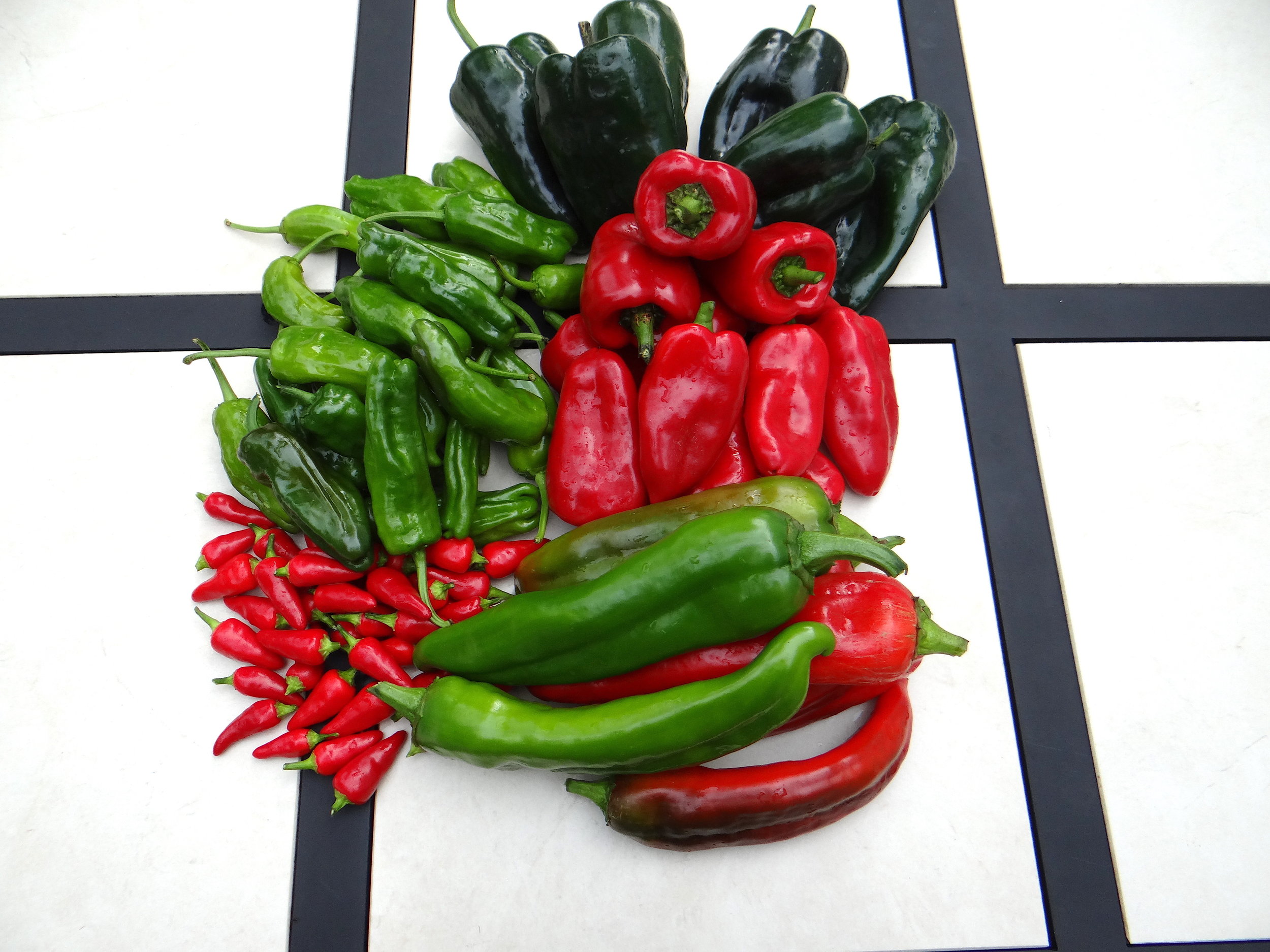Why do I garden?

As I sit in the sunroom, sipping my morning coffee, I have a perfect view of our backyard garden. There’s a ruckus in the cherry tomatoes, as two catbirds and a robin vie to see who can eat (or at least peck holes in) the most fruit in the shortest time. I notice that two heirloom Brandywines, a day short of red perfection, have been gnawed by the squirrels. I suppose they grew impatient, waiting for the raspberries to ripen. At least the mesh fencing I installed last year has kept the rabbits out of the lettuce. I take consolation in this small victory. But I recognize that the main beneficiaries of the garden are the suburban wildlife, not me. So I ponder the question: why? Why do I invest so much time and energy in gardening, for relatively little reward?
There was no garden when we moved in 11 years ago, so J and I decided to create one. It’s a small (8’ x 16’) raised bed, filled with soil that was excavated during the construction of the sunroom. Red clay, heavy and poorly draining, typical of the region. Only now, after a decade of composting and tilling, has it turned into a reasonably good medium for growing vegetables, and a limited variety at that. Through trial and error, we’ve determined which crops can tolerate our particular combination of soil and partial sunlight (courtesy of the mature trees that flank the yard). Despite multiple efforts, root vegetables have been a bust. The scars of the 2012 ‘harvest’ remain, when the foliage of a single sweet potato (a volunteer) overran the garden, producing both the world’s largest plant and smallest yam. Members of the squash family are also out, as the sprawling vines succumb to wilt almost as quickly as they grow. But tomatoes and peppers thrive, and greens grow well in the shady end. There’s plenty of basil (Italian for pesto, Thai for curry) and a few oddballs – sorrel, lemongrass, and the perennial rhubarb that returns each year.
None of the typical rationales for a garden holds true for me. It’s definitely not economical: even without the furry and winged predators, the plot is too small to make a dent in the food budget. Indeed, if you consider the time spent preparing the soil, and mulching, and weeding, and watering, these might be some of the most expensive tomatoes and peppers ever grown. Limited availability of fresh produce is not an issue, as our Delmarva region is blessed with rich and productive farms. Our share in the CSA (community-supported agriculture) supplies us with an abundance of seasonal, locally grown fruit and vegetables, which we can supplement from any number of farmers’ markets. Nor am I under any illusions that gardening is an idyllic hobby – it’s hot, sweaty work, and there are plenty of more pleasant ways to spend a muggy summer day than plucking weeds from the dirt.
And yet I persist. Partly out of a sense of nostalgia – growing up, we always had a garden behind our house in small-town North Carolina. I spent seemingly endless hours in the kitchen every summer, helping my mom and older sister with the freezing and canning: corn, squash, okra, tomatoes, beans, pickles, chow-chow. My first paying job (the summer after first grade, in violation of all child labor laws) was on my great-aunt’s farm, plucking hornworms from the tobacco plants at a nickel apiece. With the exception of graduate school in New York City, I’ve had a garden in every place I’ve lived. Gardening keeps me attuned to the daily weather, and the changing of the seasons. It teaches me patience, a habit that does not come naturally. And, while the rational scientist in me is well-versed in the mechanics of germination and photosynthesis and pollination, there’s something slightly miraculous about planting a seed, watching it grow, and literally eating the fruits of your labor. Until I lose that sense of appreciation, I think I’ll keep gardening.
h.
Cherry tomato and feta tart (if the birds don't eat all of them)
Pastry:
- 1¼ cups flour (I used a mix of 1 cup white and ¼ cup rye)
- ½ tsp salt
- ½ cup butter
- 2 Tbsp ice water, or more as needed
Filling:
- 1¼ cups feta cheese
- 35-40 cherry tomatoes
- 1 Tbsp olive oil
- few sprigs fresh thyme
- salt & pepper
Steps:
- cut butter into small cubes; freeze for 10 minutes
- in the food processor, pulse flour and salt briefly
- add the cold butter; pulse to coarse crumbs
- with motor running, add water slowly, until dough just holds together
- turn out dough, wrap in plastic, and refrigerate for one hour minimum
- preheat oven to 450˚F
- butter 9" tart pan; roll out dough with pin; line pan with dough
- crumble feta into tart; add salt and pepper to taste
- arrange cherry tomatoes on top; drizzle with olive oil
- place tart in the oven; reduce heat to 425˚F
- bake 35-40 minutes, until edge of pastry begins to brown
- remove from the oven; sprinkle with thyme sprigs
- bake 10 minutes more; remove from oven; remove thyme if woody





